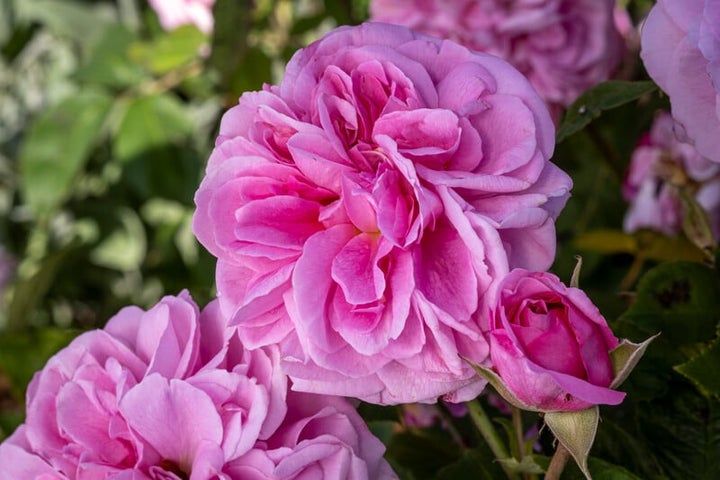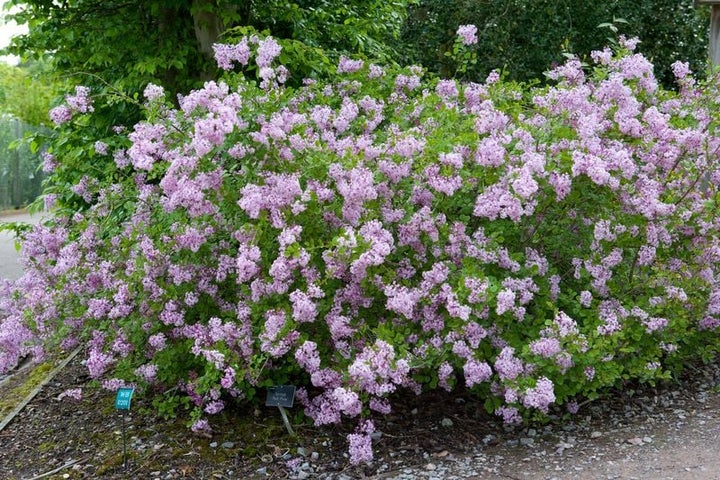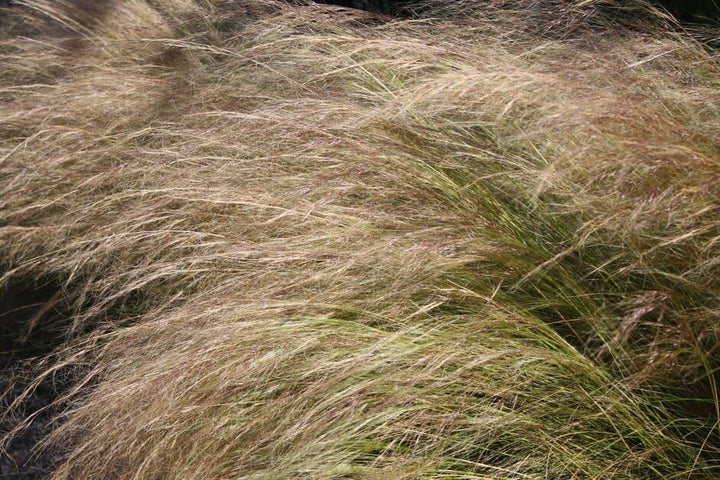
Quick facts
Sensory plants can help to bring back memories and lift your mood
Having sensory plants that have been prominent in your life can spark conversations with others
Some scented plants can have calming effects
The planting plan
James Lawrence, RHS Principal Horticultural Advisor, has designed this simple, attractive, and most importantly, sustainable border design for you to try at home with plants that are easy to grow, widely available and look good together.
This simple sensory planting design features a combination of flowering shrubs and that will provide extra sensory stimulation, including fragrance and splashes of colour. Once established, they will thrive together to provide interest throughout the year.

Choosing scented shrubs for sensory gardens
This scheme promotes experiencing plants through a variety of senses. The fragrant Lonicera provides scent in winter, the Syringa in spring and the Rosa in summer. The textural and tactile qualities of the Stipa and Stachys provide other sensory interest throughout the year. There is plenty of visual impact throughout the seasons too.
The Lonicera, Syringa, Verbena and Stachys also attract pollinators, helping to increase your garden’s .
The Stachys will provide ground cover, which helps to reduce soil surface erosion and moisture loss as well as aiding in weed suppression.
Using an organic mulch, preferably homemade compost, while the plants establish can help to provide the same benefits. Avoid spreading bagged potting on beds and borders. Mulches should be spread when the soil is already moist to help trap some of that moisture before it dries out in summer.






1 - Rosa 'Gertrude Jekyll' is one of the best roses for scent. It is an upright, open shrub with healthy grey-green foliage and bright pink blooms all summer.
2 - Lonicera fragrantissima provides the central height and structure of the scheme and has beautifully fragrant, pale yellow-white blooms in late winter, with repeat flowering if deadheaded.
3 - Syringa ‘Red Pixie’ provides spring interest with sweetly scented lilac-pink flowers. If lightly pruned after flowering, a second flush of flowers can appear later in the season.
4 -Verbena bonariensis has heads of bright purple flowers held high on tall, wiry stems all summer. These allow a view through to planting behind.
5 - Stipa tenuissimahas a spray of very narrow leaves and feathery plumes of flowers in summer. This gives a sense of movement in the breeze.
6 - Stachys byzantina forms an evergreen ground cover of silvery leaves, covered in a soft furry layer of hairs. In summer, spikes of small purple-pink flowers nestle amongst silvery bracts on furry silvery stems.
About sensory planting
Sensory planting is designed to stimulate the senses of smell, sound, taste, and touch, as well as sight. They tempt a visitor to view plants at close range, to reach out and touch, to inhale a fragrance, to listen to gentle sounds, and to actively experience the garden with all their senses.
By choosing plants that are good for senses, you can improve mood and general wellbeing. The sensory attributes of plants allow people to engage with the environment around them in a way that is meaningful and beneficial to their mind and body.
Why choose a sustainable planting combination?
Using the ethos of ‘right plant, right place’ to create a sustainable planting combination is great for the environment. It helps avoid waste and the use of products and practices needed to try and help ailing plants, such as the application of fertiliser. It also creates robust, long-lived planting that benefits soil health and garden . For more information about sustainable gardening, please see the RHS Sustainability Strategy.



